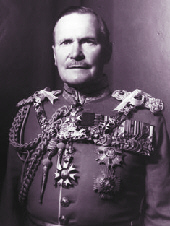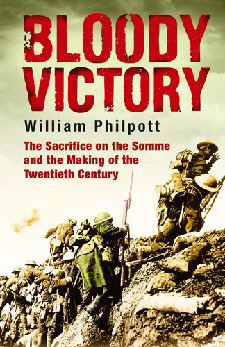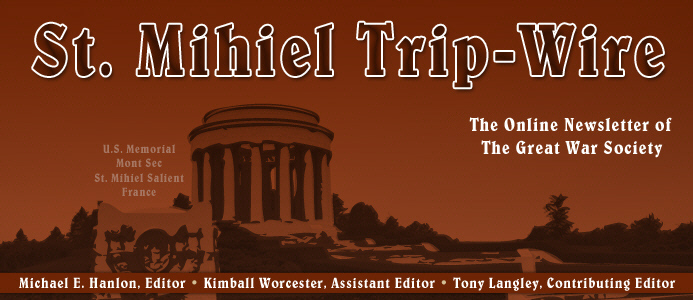

TRENCH REPORT: Much has transpired since our last issue. Your editor led his annual tour of the Western Front and completed an 1800-km reconnaissance of the Italian Front (photos below). . . Also down below you will see updated information on future tours I will be leading, including the July 2011 expedition to the Italian Front. . .Upon returning I received the sad news of the death of my friend and contributor to our Website Margaret Haas, 81, in Snyder, New York. Right up until her passing, we were helping Margaret in her project to find a publisher for the diary of her father, Albert, who served with the Intelligence Section of the 309th Infantry, 78th Division of the AEF. Alas, she did not succeed. I felt her manuscript was one of the best of the several hundred such documents I've examined over the years. We have an excerpt online. (link). . .Last month we had a major feature on those readers who have recently published books on the war. In the future I would like to do the same for those of you who maintain Great War Websites and blogs. Please send an email with the title, url and a summary of your theme and content. (email) MH
This Month's Internet Feature
World War I Gear
AEF Field Gear
Reading List of WWI Equipment & Uniforms
The M-1917 Helmet
A Primer on WWI Gas Masks
Reenactors Gear Vendors (Commercial Site)
Great War Militaria (Commercial Site)
New at Our Own & Our Friends' Great War Websites
Click on Title or Icon to Access
|
From friend Olivier Pierrard, co-founder of the Marne Museum at Villeroy, France
A great video from reader David West
From the World War I Document Archive
The Times Documentary History of the War (1917-1920) in digital format, thanks to the University of Toronto.
At Great War Society Sites
At WFA-USA Sites
|

Readers are likely somewhat familiar with the military career of New Zealand's Lt. General the Lord Freyberg, VC, GCMG, KCB, KBE, DSO--hero at Gallipoli and on the Western Front, commander of the New Zealand Division in WWII, governor general of New Zealand, and so forth. What's especially fascinating about him, though, is his pre-WWI career when he practiced dentistry, served as a strikebreaker on the Wellington waterfront, escaped to San Francisco for some sort of adventure and made his way to Mexico, where he is thought to have had some participation in their civil war. But in the midst of his North American enterprises, a certain archduke was assassinated, and Freyberg's life, like the history of the world, took a different turn.
|
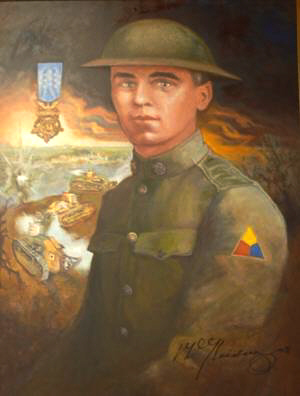
Cpl. Harold Roberts,
KIA 1918, Argonne Sector
First U.S. Tank Corps Member to Receive the
Medal of Honor (citation)
|
GREAT WAR 2010 EVENT CALENDAR
|
A World War I Event Calendar
We continue to add important events to our WWI Calendar. There is simply more information than we can display here on the Trip-Wire. It is available for all, however, by downloading it from our Website.
(download calendar as Word document)
|
WFA-USA & TGWS Joint Annual Seminar
September 10-11, 2010
National World War I Museum,
Kansas City, MO
(Program and News)
|
Western Front Association
U.S. Branch Chapter Meetings
Check for Your Region
Regularly Updated (details)
|
Great War Society Monthly Chapter Meetings
Berkeley, San Francisco, and Palo Alto, CA
Regularly Updated (details)
|
Upcoming Events at the National World War I Museum
Kansas City, MO
Regularly Updated (details)
|
Send additions/corrections for our master schedule:
Email Response
|
The Australian War Memorial will hold a conference reviewing the Gallipoli campaign of 1915. It is scheduled for August 5-6 corresponding with the 95th anniversary of the ill-fated expansion of the invasion around Suvla Bay. (details)
Our film reviewer, Andy Melomet, sends a heads-up, that the well-received 1976 docu-drama, Once An Eagle, starring Sam Elliott as "Night Clerk" Sam Damon, distinguished veteran of multiple American wars, is due to be released on DVD in August. The series is based on Anton Meyer's novel of the same name, which has been a fixture on the U.S. Army Chief of Staff's Professional Reading List.
Frequent contributor Len Shurtleff, reports that Steven Spielberg's film of the award-winning play War Horse has been cast and scheduled for release in August 2011. The story of a horse caught up in the carnage of World War I started out as a children's book written by Michael Morpurgo.
Unnecessary Remake Alert!: Daniel Radcliffe (My Boy Jack) is to play German soldier Paul Baumer in a
new film version of All Quiet on the Western Front, according to Variety. Shooting will begin in spring 2012.

He gave, as Christ, the life he had
The only life desired or known;
The great, sad sacrifice was made
For strangers; this forgotten dead
Went out into the night alone.
There was his body broken for you,
There was his blood divinely shed
That in the earth lie lost and dim.
Eat, drink, and often as you do,
For whom he died, remember him.
Muriel Stuart,
Forgotten Dead, I Salute You
|
|
|
|
|
Page Two
|
|
|
 |
May 2010 Italian Front Recon
By Trip-Wire Editor Mike Hanlon |
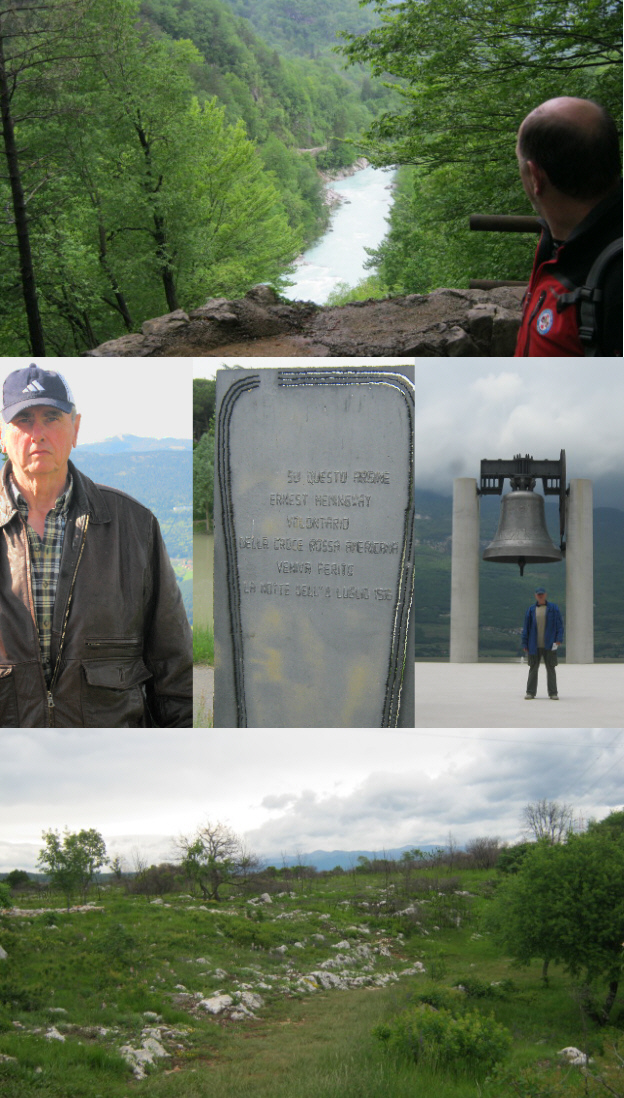
Top: Director of the Award-Winning Kobarid (Caporetto) Museum Joze Serbec Overlooking the Soca (Isonzo) River from an Italian Defensive Position Near Caporetto
Middle: The Editor Near Asiago, in the Distant Background Is Monte Verena, from Which the Opening Salvo of the War on the Italian Front Was Fired; Marker on Piave River, Where Ernest Hemingway Was Wounded; Editor Before the Maria Dolens Bell outside Rovereto, Which Is Rung 100 Times Every Evening in Memory of the Fallen
Bottom: Barren, Windy, Limestone Carso Plateau, Where Italy Mounted 11 Offensives, with Results Ranging from Limited Success to Utter Disaster for Them
|
|
World War I Headlines
in the
21st Century
|
|
More by Our Readers (Continued)
Last month we dedicated a section on all the books recently authored by Trip-Wire readers. I had to make an editorial command decision, however, to exclude from that article two of our regular readers and occasional contributors, Tony and Holt, who write and publish a whole line of what are the best battlefield guidebooks available. To say they are prolific is something of an understatement. T&V produce guides covering both World Wars, touring maps and some singular volumes such as works on legendary cartoonist Bruce Bairnsfather. Below is an insert from one of their Western Front volumes (two covers inserted). I use these volumes when leading on my own expeditions to the front. Their works can all be ordered at their Website: http://www.guidebooks.co.uk/
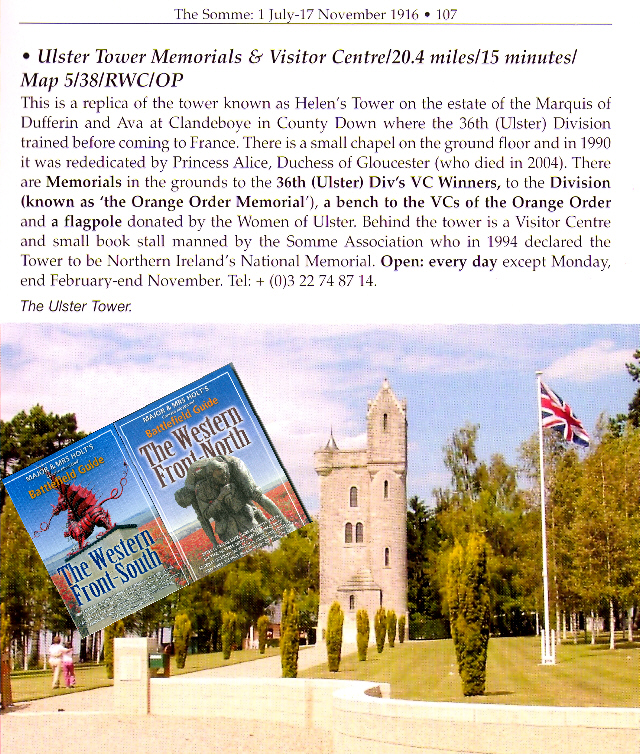
|
|

|
François Flameng
|
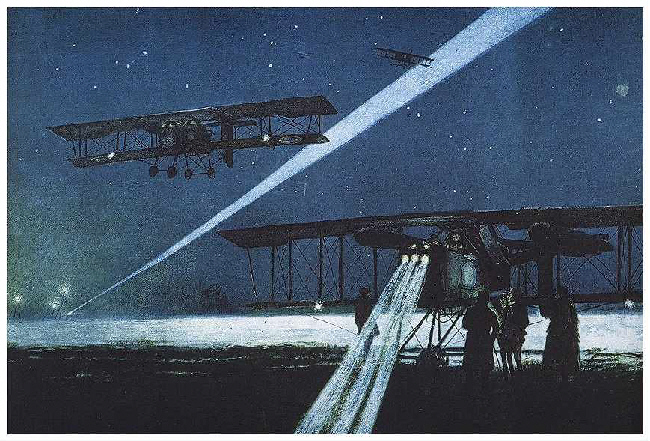
Night Operations, 1917
François Flameng (along with Georges Scott) was one the most renowned illustrators of the Great War in France. He was a talented and respected artist in his own right for many years before the war and was a historical painter as well as a modern portraitist and decorator of public buildings. He was professor at the Academy of Fine Arts and honorary president of the (French) Society of Military Painters, as well as an officially accredited artist to the war ministry.
|
Click Here to Visit the Website of Our Contributing Editor Tony Langley
War in a Different Light

|
|
Subscribe to Our Online Magazine
|
|

|
|
|
Page Three
|
|
|
The Return of Christina Holstein and Her
Sleeping Beauties
Christina and Tony Noyes relocated to the UK last year and are living sufficiently close to the English Channel to be able to travel to France easily. They return frequently to Verdun, the Argonne Forest, and the St. Mihiel Salient and have various ongoing projects. Christina is currently preparing a book on the German siege and capture of Fort Vaux at Verdun in June 1916. It will be published in the Battleground Europe series by Pen & Sword Books in 2011. She is delighted that her most recent publication, Walking Verdun - A Guide to the Battlefield, is selling well and that her earlier book on Fort Douaumont has been reprinted in a revised edition. She is now settled in and is able to resume her popular contributions to the Trip-Wire.
|
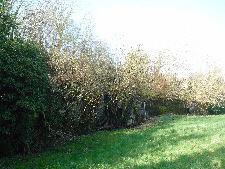
Entrance from Distance
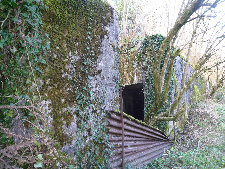 Main Entrance
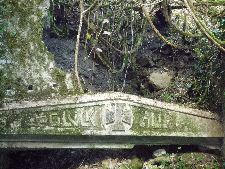 Inscription: "To Luck"

Inside
|
One of the most interesting things about the old Western Front is the number of places that remain lost in the forest, sleeping the sleep of a thousand years until one day an archaeologist comes along and wakes them up. Such a place is the former German first aid post at La Mare aux Boeufs on the western edge of the Argonne Forest, west of Binarville.
La Mare aux Boeufs -- roughly speaking, the name means 'the Bull Wallow' -- is a tiny place, the sort that a visitor would drive through without really noticing, which probably explains why the first aid post has escaped undisturbed. It is very easy to miss. Having arrived in the 'centre' of La Mare aux Boeufs -- a mere handful of houses at the junction of two roads -- the determined and previously informed visitor has to leave his car and follow a grassy track along a stream for a few hundred yards in the hope of spotting something tucked cleverly under the hillside that looks like a long bunker. The old aid post is heavily overgrown and when you have found it, you have to climb over a fence to get in. Once there, you see the inscription that so many wounded men must have hoped would apply to them -- Glück Auf ("To Luck").
From the entrance, a long corridor that still shows signs of blue decoration leads to a number of rooms. There is no glass in the windows, but a stone sink remains. A couple of the rooms have traces of stovepipes, but otherwise nothing remains, not even graffiti. The size and solidity of the building are impressive and during the war the sight of it from the little railway that ran alongside must have raised the spirits of the wounded and restored hope to men who had lost it. Busy then, it is today a silent place. You climb in through the greenery, and when you turn away the green fronds take over again and hide it all from sight.
|
|
Postscript:
As we were going to press, Christina forwarded some photos of the June 23rd Commemoration of the Battle of Verdun. This date has been accepted for many years as the 'official' commemoration date of the battle, which was the war's longest. The high point of the battle is considered to be 23 June, marking the last major German offensive. The dates for the fall of Forts Douaumont and Vaux were not regarded as celebratory events and the date of 24 October -- the major French counteroffensive -- was not the end of the battle and too close to the date of the Armistice on November 11th.
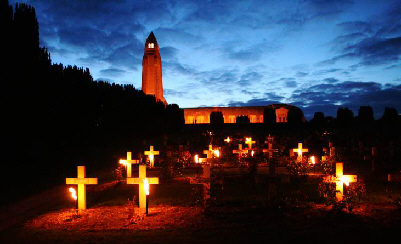
Verdun Ossuary and National Cemetery During the Commemoration, June 23, 2010
|
|
 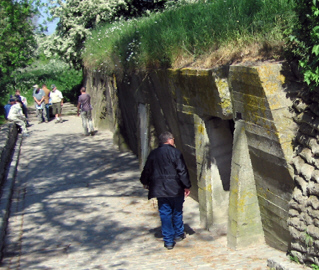
Essex Farm Dressing Station North of Ypres: 1915 on left, 2007 on right
John McCrae's Duty Station When He Wrote "In
Flanders Fields"
|
 |
Bloody Victory: The Sacrifice on the Somme and the Making of the Twentieth Century
By William Philpott
Reviewed by Len Shurtleff
|
The author has given us an elegant, sophisticated, and intellectually rigorous analysis of a turning-point campaign of the Great War. Much has been written about the Somme, including detailed studies of individual actions making up the five-month-long struggle.
Most of these emphasize the suffering and futility of the affair, the ineptitude and bull headedness of British commanders, most particularly Sir Douglas Haig. Philpott, on the other hand, sees the Somme as a victory establishing British and French material and tactical superiority over the previously dominant German Army. He describes in detail not only the battles themselves, but also the meticulous planning and preparation (not to mention the inter-Allied squabbling) that went into them. He offers as well insight into the strengths and weaknesses of the opposing commanders and analysis of evolving British and French battle tactics, emphasizing the flexible role of platoons of riflemen, grenadiers, and automatic riflemen. The attrition suffered by the German Army on the Somme obliged its high command to withdraw in the spring of 1917 from the Noyon salient and hunker behind the Siegfried Stellung (Hindenburg Line), shortening their line by some 40 km and freeing 14 divisions for strategic reserve. Bottom line: while the Anglo-British effort on the Somme did not achieve breakthrough, it did lay the groundwork for victory in 1918.
Bloody Victory: The Sacrifice on the Somme and the Making of the Twentieth Century, William Philpott, Little Brown, 2009, 721 + xi pages, maps, index, photos, notes, ISBN 978 1 4087 0108 9, $25 HB. To be released in the USA in October 2010 by Knopf under the title Three Armies on the Somme. The author is senior lecturer at King's College London. This book won the 2009 Tomlinson Book Prize offered by the U.S. Branch of WFA.
|
|
|











